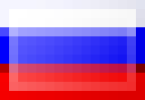Kitting Guide: Definition, Examples, & Benefits of Kitting Inventory

Efficient inventory management is crucial for businesses seeking to streamline their operations and improve customer satisfaction. One valuable strategy in inventory management is kitting. In this blog post, we will explore the definition of kitting, provide examples of how it is used in different industries, and discuss the benefits it offers to businesses.
Definition of Kitting: Kitting, also known as product bundling or assembly, refers to the process of grouping individual items or components together as a single unit. These kits are pre-packaged and ready for use or sale. Kitting involves combining various items that are related or commonly used together to fulfill specific purposes or meet customer demands.
Examples of Kitting in Different Industries:
-
Retail Industry: In the retail sector, kitting is commonly used to create product bundles. For example, a computer retailer may offer a bundle that includes a computer, monitor, keyboard, and mouse. This allows customers to purchase all the necessary components in one package, simplifying the buying process and often offering cost savings compared to buying each item separately.
-
Manufacturing Industry: In manufacturing, kitting plays a vital role in assembling products. Manufacturers often use kits to streamline their production processes. For instance, in automobile manufacturing, kits containing various parts and components required for specific models are prepared in advance. This eliminates the need for workers to search for individual parts, saving time and reducing errors during assembly.
-
E-commerce Industry: E-commerce businesses frequently employ kitting to create customized product offerings. For example, a beauty retailer may create a skincare kit that includes a cleanser, moisturizer, and facial mask. These kits cater to specific customer needs or address common concerns, providing convenience and enhancing the shopping experience.
Benefits of Kitting Inventory:
-
Improved Efficiency: Kitting helps businesses improve their operational efficiency. By pre-assembling kits, companies reduce the time and effort required to gather individual components when fulfilling orders or assembling products. This results in faster order processing, reduced assembly time, and increased overall productivity.
-
Enhanced Customer Experience: Kitting allows businesses to offer tailored product bundles or kits that cater to specific customer needs. This not only simplifies the buying process for customers but also provides them with a convenient solution that meets their requirements. Customers appreciate the convenience and value of purchasing pre-packaged kits.
-
Inventory Optimization: By kitting inventory, businesses can optimize their stock levels. Instead of managing and tracking individual items separately, kitting allows for better control and visibility of inventory. Companies can adjust their stock levels based on the demand for kits rather than individual components, reducing the risk of overstocking or stockouts.
-
Cost Savings: Kitting can result in cost savings for both businesses and customers. Businesses can benefit from reduced labor costs, improved production efficiency, and optimized inventory levels. Customers may enjoy discounted prices or bundle offers compared to purchasing each item separately. This incentivizes customers to make larger purchases, leading to increased sales and revenue for businesses.
-
Streamlined Supply Chain: Kitting can streamline the supply chain by simplifying the procurement and logistics processes. Suppliers can provide pre-packaged kits, reducing the number of individual items they need to manage and deliver. This streamlines the procurement process, minimizes shipping costs, and ensures efficient inventory replenishment.
Conclusion: Kitting is a valuable strategy in inventory management that offers numerous benefits to businesses across various industries. By grouping related items or components together into pre-packaged kits, companies can streamline their operations, enhance the customer experience, optimize inventory levels, and achieve cost savings. Consider implementing kitting strategies in your business to improve efficiency, meet customer demands, and gain a competitive edge in the market.
 English
English
 French
French  Afrikaans
Afrikaans  Dutch
Dutch  Finnish
Finnish  Zulu
Zulu  Norwegian
Norwegian  German
German  Hindi
Hindi  Xhosa
Xhosa  Arabic
Arabic  Italian
Italian  Russian
Russian  Türkçe
Türkçe  Danish
Danish  Ewe
Ewe  Hausa
Hausa  Igbo
Igbo  Irish
Irish  Luganda
Luganda  Oromo
Oromo  Sesotho
Sesotho  Swahili
Swahili  Tigrinya
Tigrinya  Tsonga
Tsonga  Twi
Twi  Yoruba
Yoruba  svenska
svenska 
 Australia
Australia  Botswana
Botswana  Canada
Canada  Denmark
Denmark  Finland
Finland  Germany
Germany  Ghana
Ghana  Ireland
Ireland  Kenya
Kenya  Namibia
Namibia  Netherlands
Netherlands  New Zealand
New Zealand  Nigeria
Nigeria  Norway
Norway  Rwanda
Rwanda  South Africa
South Africa  Sweden
Sweden  Tanzania
Tanzania  Uganda
Uganda  United Kingdom
United Kingdom  United States
United States  Zambia
Zambia  Zimbabwe
Zimbabwe 



